Although the old city of Bukhara is full of Madrasahs, Minarets, Mosques and Mausoleums, it is also famous for its 3 surviving undercover bazaars, or trade domes – Taki-Sarrafon (dome of money changers), Taki-Telpakfurushon (dome of hat makers) and Taki-Zargaron (dome of jewelers). Those who have been reading along for a while can imagine why I was so excited! These bazaars sat at the intersections of major crossroads within the city and their domed roofs were designed to draw in cool air.
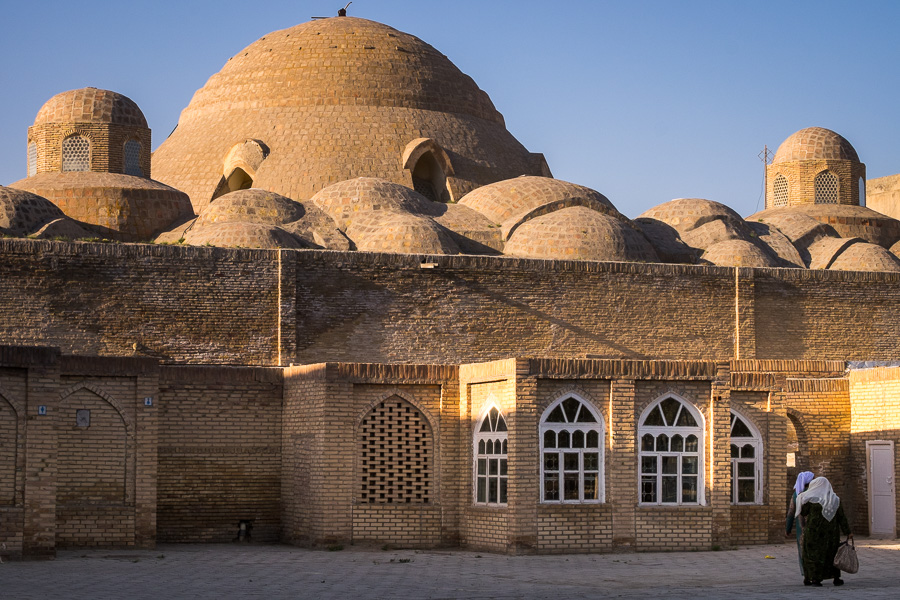
Well, the money changers now wander the streets, the jewelers have moved to a different area, and I’m not sure what has happened to the hat makers (though there are still hats on sale) – so these amazing buildings are now given over to every imaginable souvenir for tourists. Still a marketplace for sure, and the items for sale are definitely much higher quality than the tat in Samarkand, but somehow the offering of unnecessary souvenirs rather than essential items detracts from the experience of the place and turns it into Disneyland. Call me a hopeless romantic for the Silk Road – it’s just how I feel.
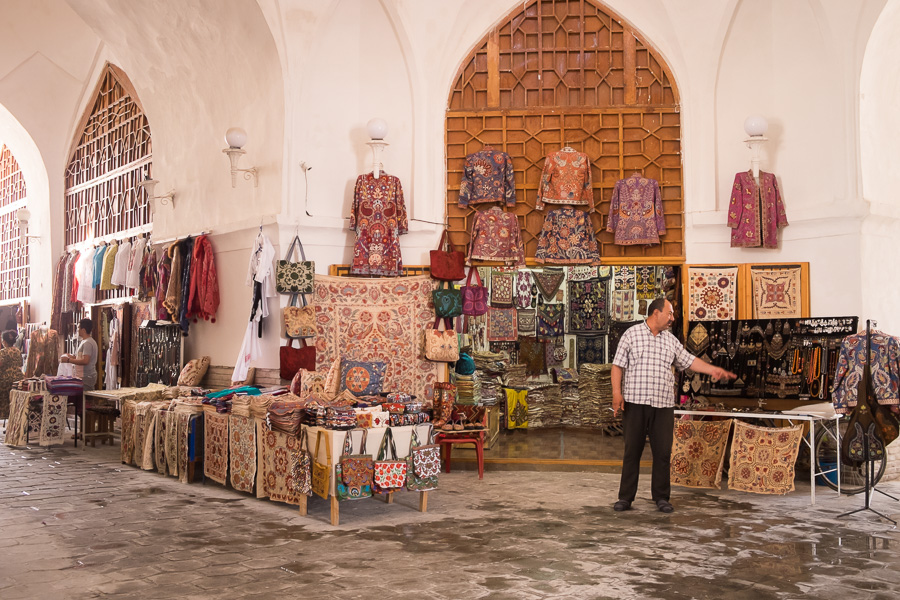
I did wander into one large trading place where I could imagine myself back in the day. It was actually dedicated to carpets and suzanis (embroidered cloths) and there was a large French tourist group in there distracting the sellers – so I was free to wander and not engage with anyone. For a start, the domed roof was incredible.
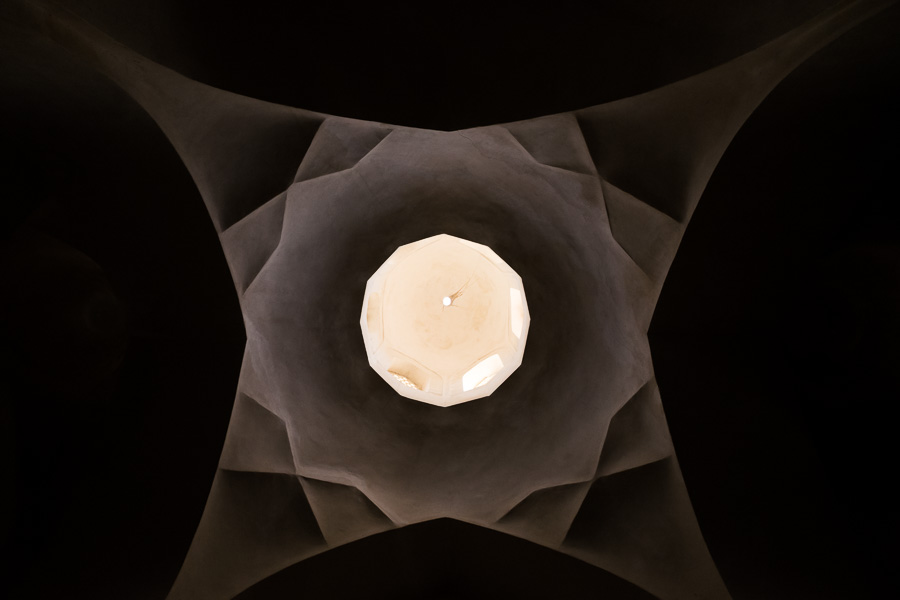
Watching the haggling happening in the central area gave me a glimpse of what things may have been like (though I imagine with many more people and very different items).
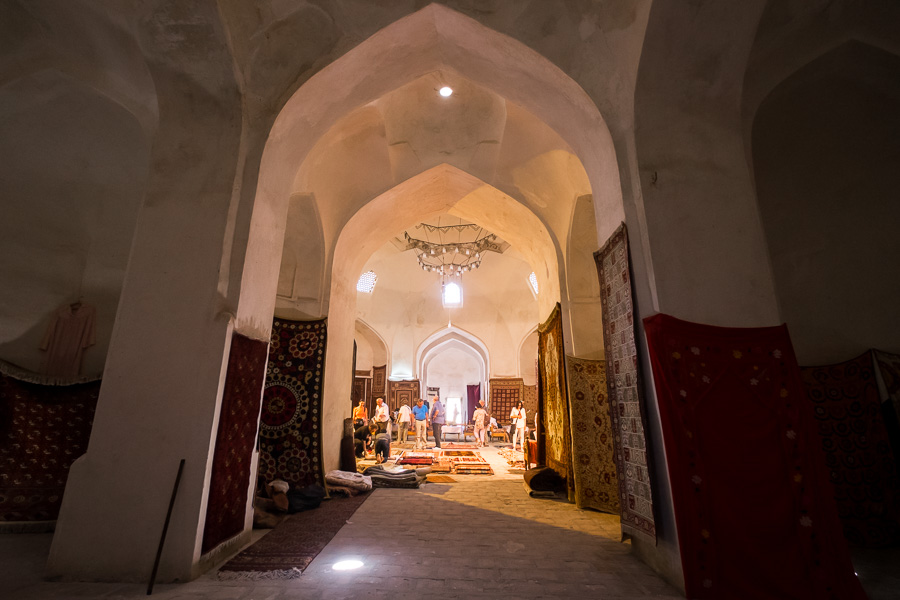
And seeing all the carpets and suzanis hung around the outer rim of the building, I could imagine each of them being a small stall with people from all across the region buying and selling.

They even had weaving looms and embroidery machines set up – though there was nobody working there during my visit.
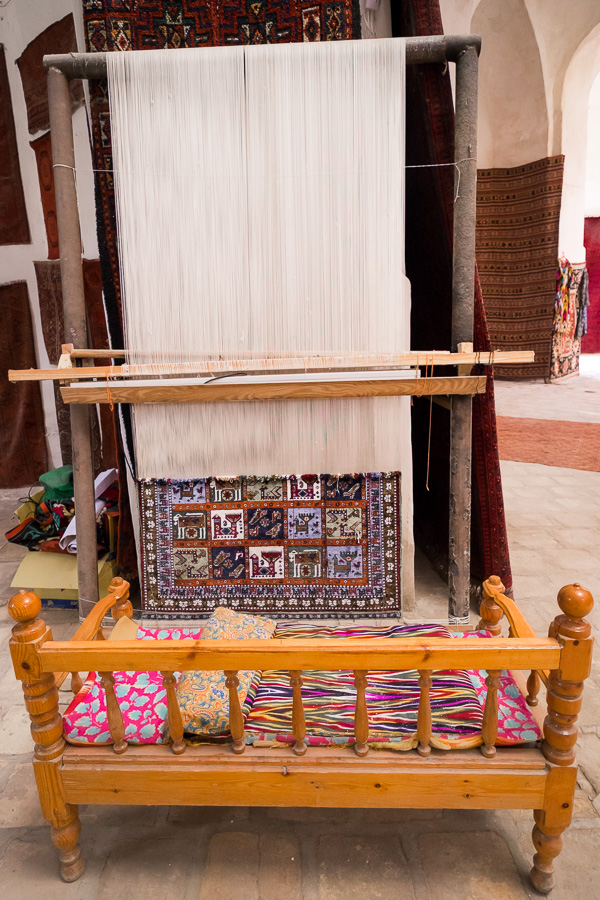
The funny thing is that when the French group left, the sellers didn’t come see me at all. I guess they only really go after the big group dollar…
In contrast, the jewelry market (when I found it in its new location) was an absolute hive of activity during the morning! 4 rows of sellers set up – some with very little, some with a lot, most with gold (Russian 14ct), a few with silver.
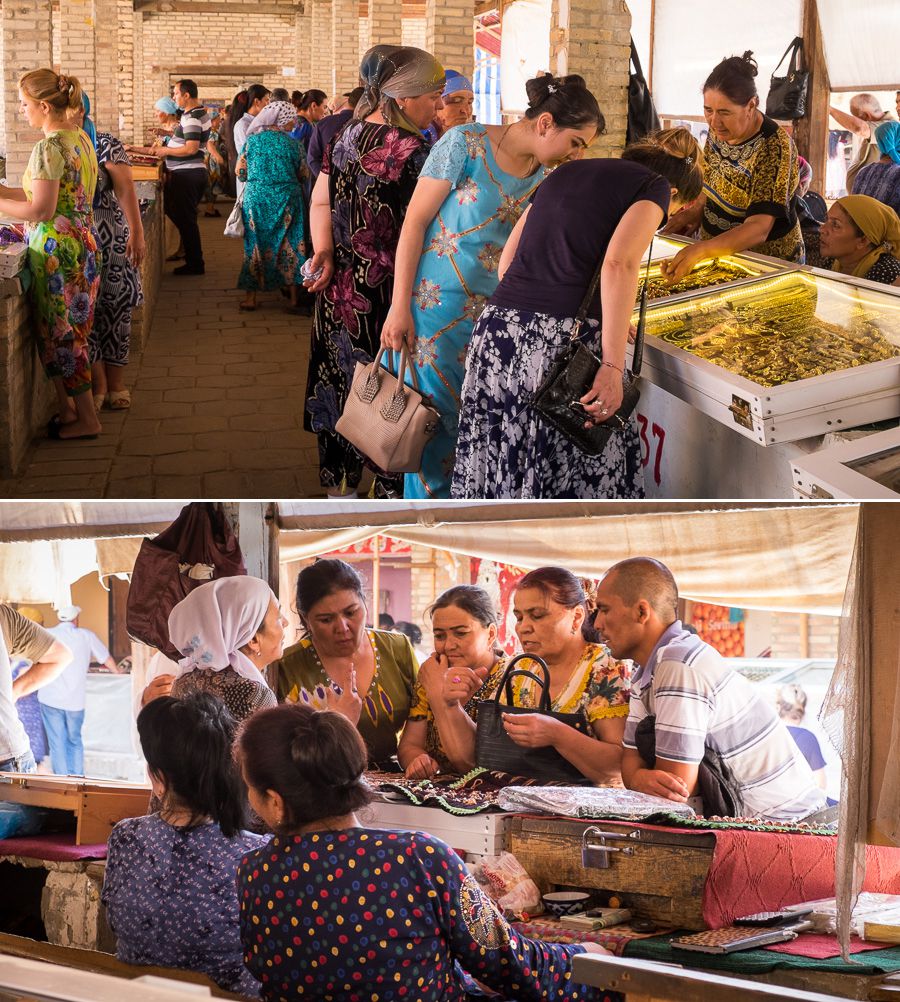
I spent over an hour there checking everything out and, I have to say, I was surprised at how busy it was given the prices. Gold is not cheap – even in Uzbekistan! In the end, I bought a pair of gold earrings (haven’t seen anything like them in Australia and I really struggle to find earrings I like) and 2 silver rings (I’m guessing second hand and handmade given their imperfections) for about $100.
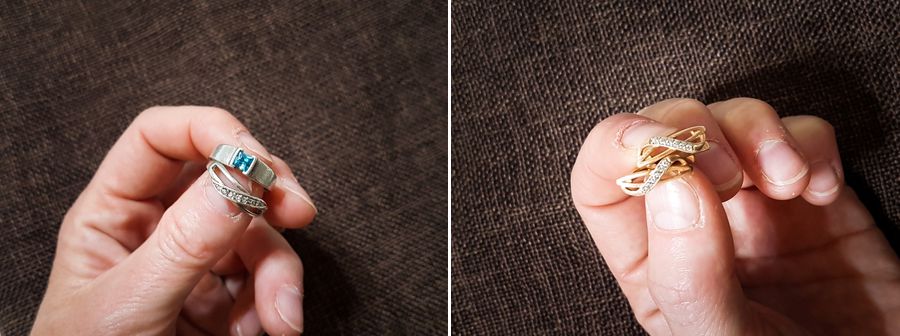
At another place, I bought a pair of earrings that were made in a modern take on a traditional Uzbek design and got the maker to convert them into 2 necklace pendants for me.

Then, when I wasn’t supposed to be looking anymore, I found one last pendant that was so unusual I instantly fell in love with it. How could I say “no” for $13?

And, well ok, I also bought a raw silk scarf … because, like jewelry, you can never have too many scarves.

So yes, although I have an issue with the extreme commercialisation of tourism and the need to buy souvenirs – I do partake in it myself to a degree… I admit I went a bit berko in Bukara! :-/
The one other market/souvenir-related thing I’ll mention here was my visit to the local puppet maker. Yes, I have a thing about puppets and I’m always enchanted by all types – from sock puppets to marionettes.
This place was about 2 doors down from our hotel and I wasn’t too sure what to expect when I entered. Turns out, there were large posters up along the walls explaining the history of puppetry in Uzbekistan in Uzbek, Russian and English, and the puppet-maker (who was there making a puppet of course) quickly came and chatted to me.
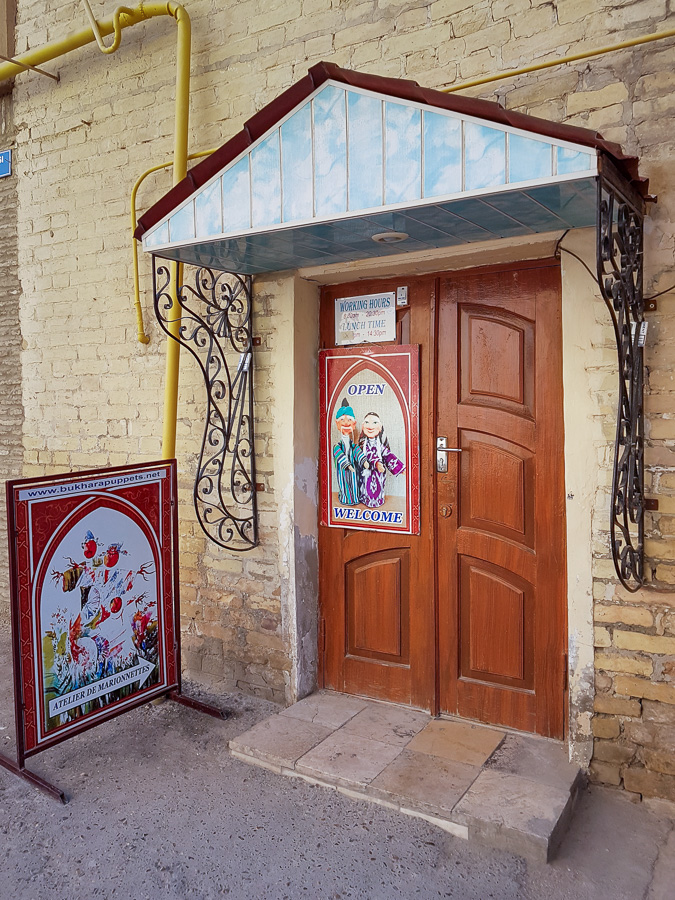
Half miming and half talking in OK English, he explained to me the process for making the puppets. Essentially, they are a papier mache head on a stick with moveable hands and traditional clothes. The heads are designed, cast in a mold in a 2-step process with plenty of sanding in between, then painted. The hands and sleeves are sewn and very stiff.

Two fingers control the motion of the hands and your other hand controls the swivel of the head and shrug of the shoulders with the stick. Here’s me being a truly awesome puppeteer – it’s harder than it looks!
The showroom is super-impressive with two large scenes on display. The first is “Nasredin in Bukhara” – a local story.
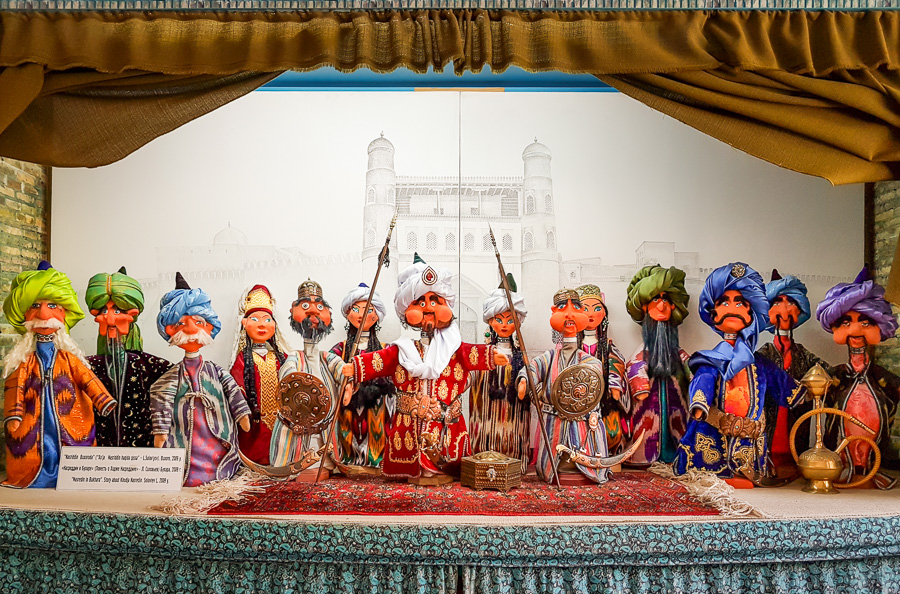
The other depicts “Ali Baba and the 40 Thieves”.
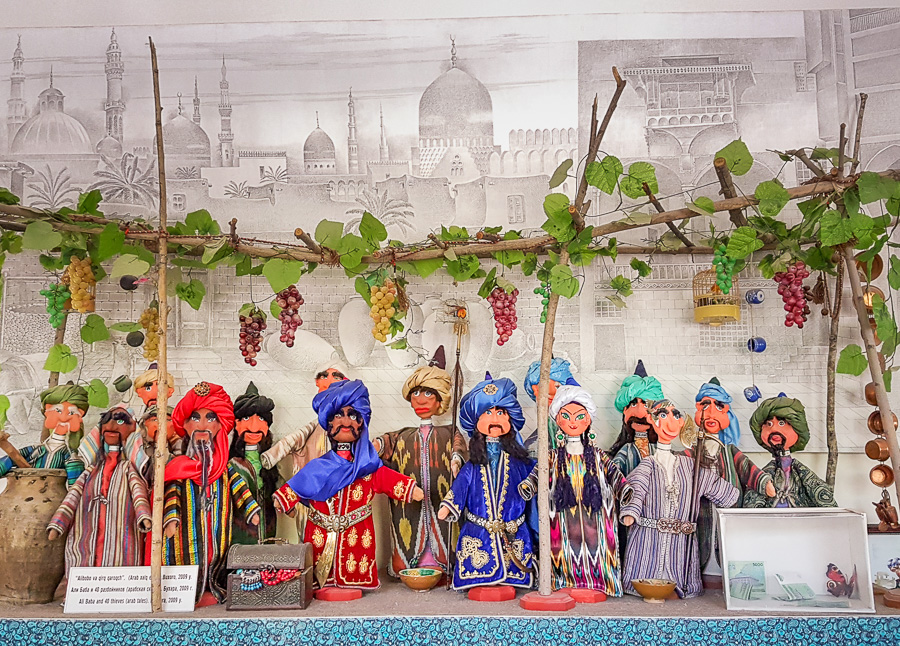
There are also loads of puppets available for sale at various price points.
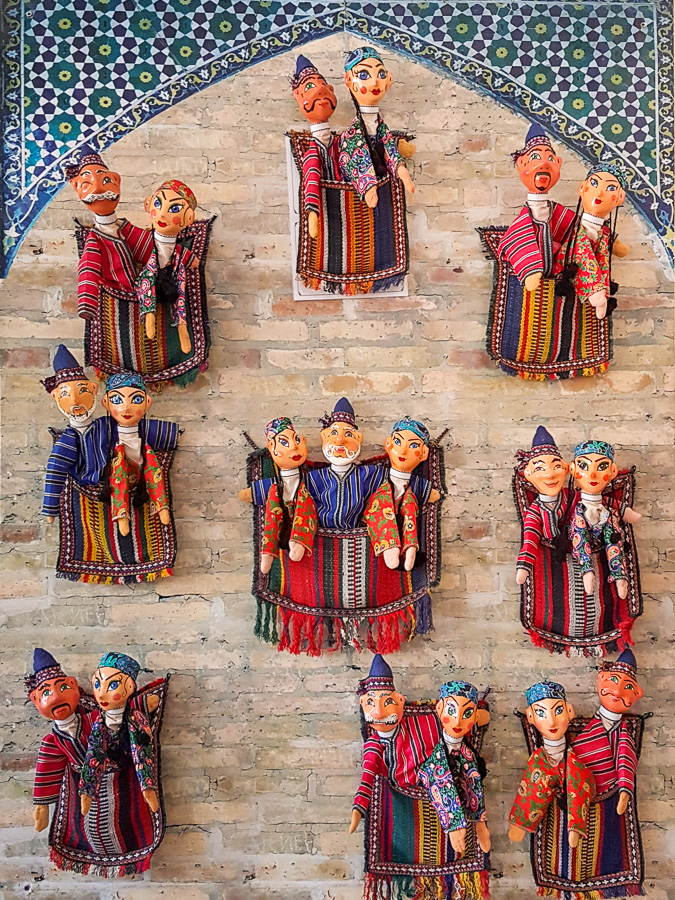
I was sooooooo close to buying the Uzbek man out of this pair for $35… but managed to resist … just!

I absolutely loved this place and spent a huge amount of time in there smiling like a fool and being truly captivated. If I were heading home within a month, I totally would have bought my Uzbek puppet!